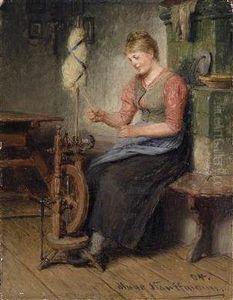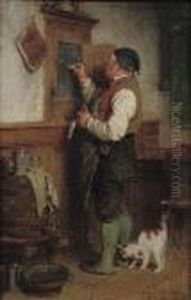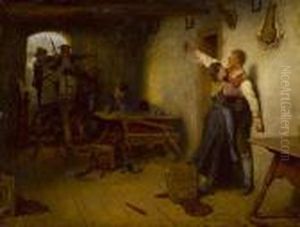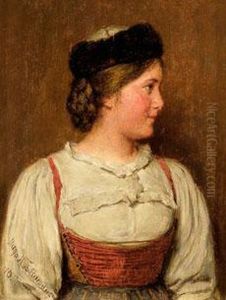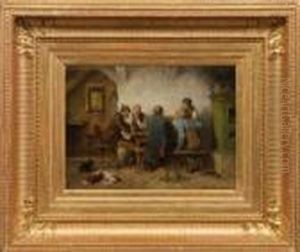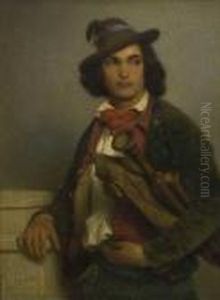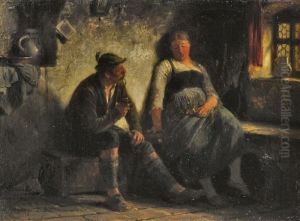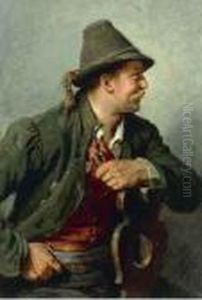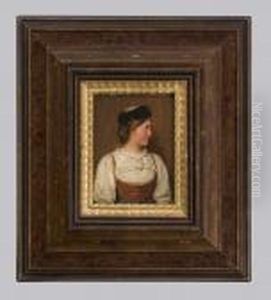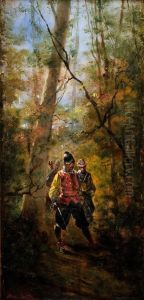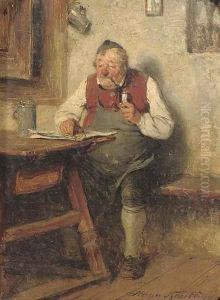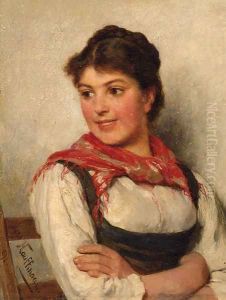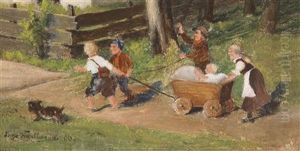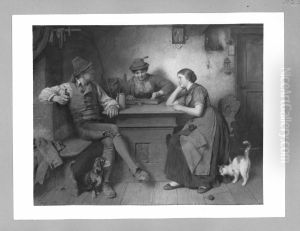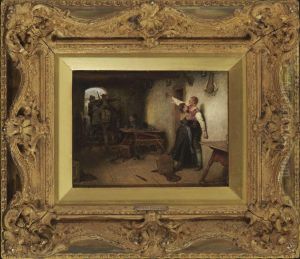Hugo Kauffmann Paintings
Hugo Kauffmann was a German genre painter born on August 7, 1844, in Hamburg. He was the son of Hermann Kauffmann the Elder, who was also a painter, and this artistic environment in his family nurtured his talent from an early age. His father's influence was significant in his artistic development, and it was under his guidance that he initially learned the fundamentals of art.
Kauffmann’s early works were influenced by the Düsseldorf school of painting, which was known for its detail-oriented and academic style. However, Hugo eventually developed his own style, which was characterized by a focus on genre scenes, depicting everyday life with a keen eye for detail and a touch of humor.
In 1867, Hugo Kauffmann made Munich his home, which was a hub for artists at the time. Munich provided him with new opportunities and influences. Here, he became associated with a group of genre painters known as the Munich School, which had a significant impact on his work. His paintings often reflected the rural and peasant scenes of Bavarian life, and he gained recognition for his ability to capture the essence of his subjects with both empathy and irony.
Kauffmann exhibited his works at various salons and exhibitions, gaining acclaim and accolades. His paintings became popular, and he enjoyed success during his lifetime. Unlike many artists who gain fame posthumously, Kauffmann's work was well-received by both critics and the public during his career.
He was also active in the artistic community, engaging with other artists and contributing to the cultural life of Munich. His legacy includes a body of work that provides a window into 19th-century German culture, with his genre scenes being particularly valued for their historical and cultural significance.
Hugo Kauffmann's life and career were dedicated to capturing the spirit of his time through his art. He passed away on December 6, 1915, leaving behind a rich collection of genre paintings that continue to be appreciated for their charm, technical skill, and sociocultural commentary.
